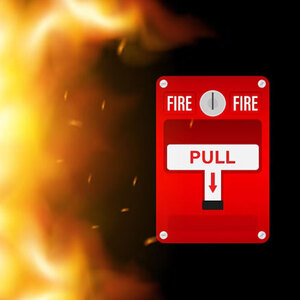More from Sri Triveni Crafts
More in Politics
Related Blogs
Archives
Social Share
Troubleshooting Common Issues in a Fire Alarm Control Panel
Body
A fire alarm control panel plays a critical role in any fire detection and safety system. It acts as the brain of the operation, interpreting signals from detectors and initiating alerts to protect lives and property. However, like any electronic system, fire alarm control panels can encounter issues that affect their performance. Knowing how to troubleshoot these problems is essential to keeping your system operational and your premises safe.
At Sri Triveni Crafts, we understand how crucial it is to maintain a reliable fire alarm system. This guide outlines common issues you may encounter and how to effectively resolve them.
Understanding How the Fire Alarm Control Panel Works
Before diving into troubleshooting, it's helpful to understand the basics of how a fire alarm control panel operates. The panel constantly monitors input from smoke detectors, heat sensors, and manual call points. When a potential threat is detected, it activates outputs such as audible alarms, flashing lights, and emergency notifications.
Modern panels are equipped with digital displays and diagnostic indicators to help users quickly identify system status and faults.
Common Fire Alarm Control Panel Issues and Solutions
1. False Alarms
Cause:
False alarms can result from dust, steam, aerosol sprays, or improperly installed detectors.
Solution:
-
Regularly clean and maintain smoke detectors.
-
Ensure proper placement away from kitchens, bathrooms, or HVAC vents.
-
Consider using heat detectors in environments prone to airborne particles.
2. Ground Fault Warnings
Cause:
A ground fault occurs when an electrical conductor contacts a grounded surface, often due to damaged wiring or moisture intrusion.
Solution:
-
Inspect wiring for insulation damage or corrosion.
-
Use a ground fault locator to isolate the issue.
-
Repair or replace affected wiring and seal against moisture.
3. Low Battery or Power Supply Failure
Cause:
Back-up batteries degrade over time, and primary power sources can fail due to outages or damaged wiring.
Solution:
-
Replace batteries every 3–5 years or as recommended by the manufacturer.
-
Verify all power supply connections are secure.
-
Install surge protectors to guard against voltage spikes.
4. Communication Failures
Cause:
Communication errors between the control panel and detection devices or monitoring stations can be caused by line damage or programming issues.
Solution:
-
Check all network or loop connections for loose or broken wires.
-
Reprogram or reset the panel to reestablish device communication.
-
Ensure the panel's software is updated if applicable.
5. Device or Zone Faults
Cause:
A single detector or a whole zone may go offline, triggering a fault warning. This can happen due to wiring problems, dirty detectors, or component failure.
Solution:
-
Identify the specific device or zone showing the error.
-
Clean the affected devices and check wiring connections.
-
Replace malfunctioning devices as needed.
Preventive Measures to Avoid System Issues
Regular Maintenance
Routine inspections can identify and resolve potential issues before they escalate. Follow a monthly, quarterly, and annual inspection schedule.
Training and Documentation
Ensure that staff responsible for fire safety are trained in basic troubleshooting. Keep documentation such as wiring diagrams, zone maps, and maintenance logs accessible.
Professional Support
Partner with certified fire safety professionals like Sri Triveni Crafts for installation, inspection, and maintenance. Our team ensures your system remains compliant and functional at all times.
When to Call a Professional
While basic troubleshooting can resolve minor faults, more complex issues—such as persistent faults, frequent false alarms, or communication problems—should be handled by certified technicians. Delaying professional intervention can compromise safety and violate fire safety regulations.
Conclusion
The fire alarm control panel is an essential part of your fire safety system, and understanding how to troubleshoot common issues can help maintain its reliability. While some problems are simple to fix, others may require professional expertise. At Sri Triveni Crafts, we offer complete fire alarm system solutions and expert support to keep your facility safe and compliant.
Frequently Asked Questions (FAQs)
1. How do I reset a fire alarm control panel after resolving a fault?
Most panels have a reset button or option in the menu. Ensure the issue is fixed before resetting. Refer to your system’s manual for model-specific instructions.
2. Why does my panel keep beeping even when there’s no fire?
Continuous beeping usually indicates a fault such as low battery, device malfunction, or wiring issue. Check the display for error codes and inspect accordingly.
3. Can I silence a false alarm without resetting the entire system?
Yes, many panels allow you to silence the alarm temporarily while the cause is investigated. However, you should reset the system after confirming it's safe.
4. How often should fire alarm panels be tested?
It is recommended to test the system monthly and conduct a full inspection annually. Always comply with local fire safety regulations.
5. What should I do if my panel displays “Device Missing” or “Open Circuit”?
This usually means a detector has lost connection or wiring is broken. Check the wiring and connections for the indicated device or zone.










Comments